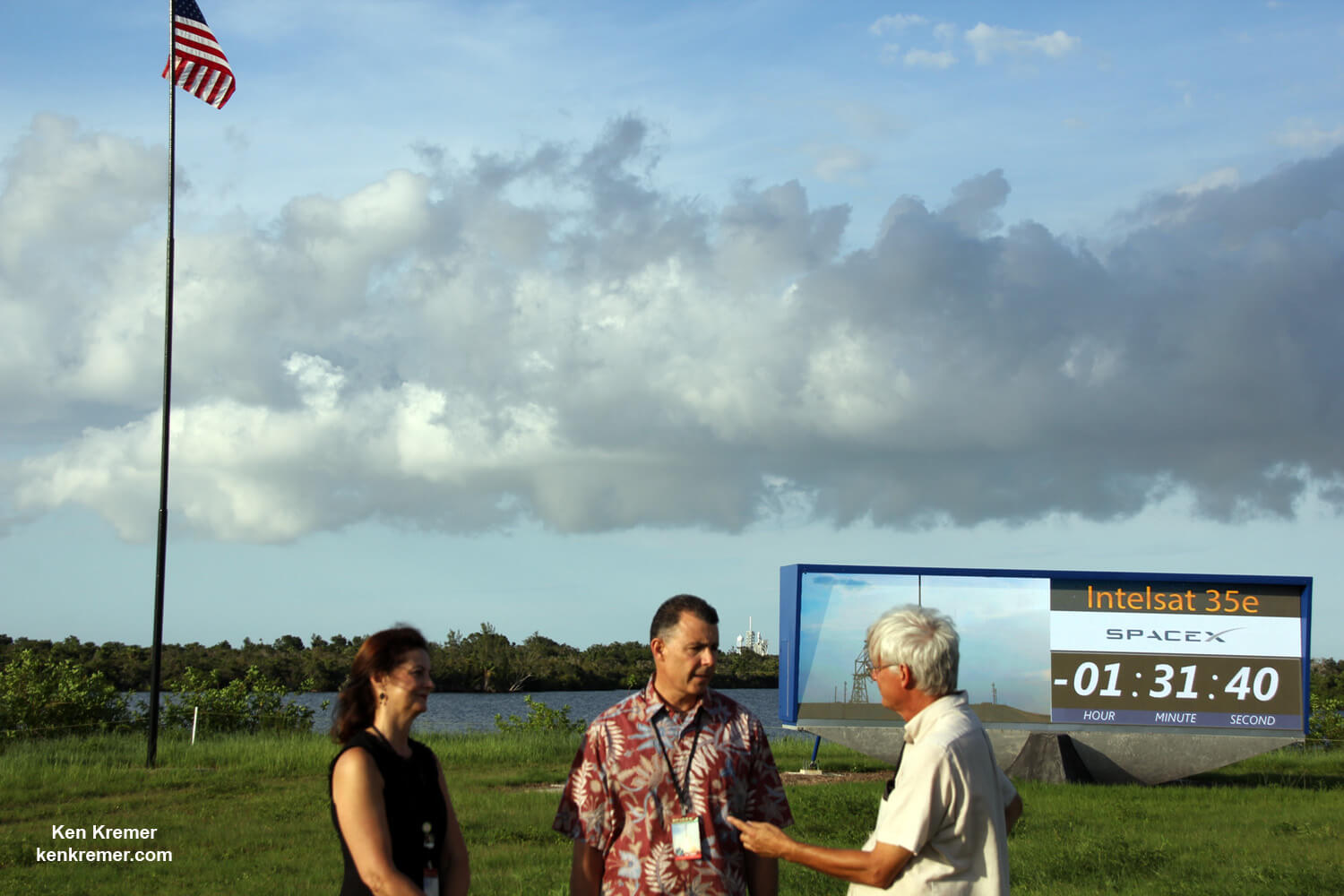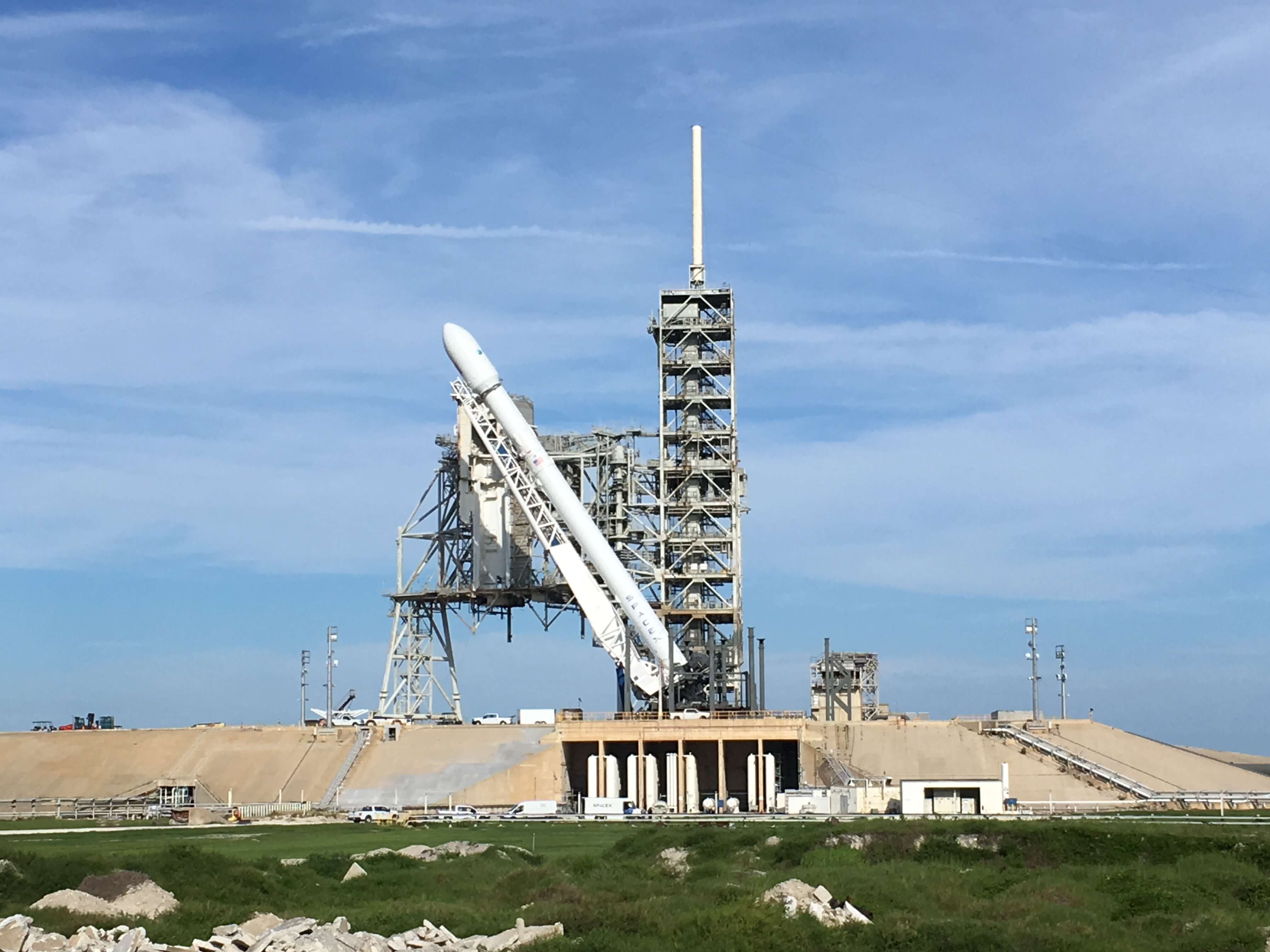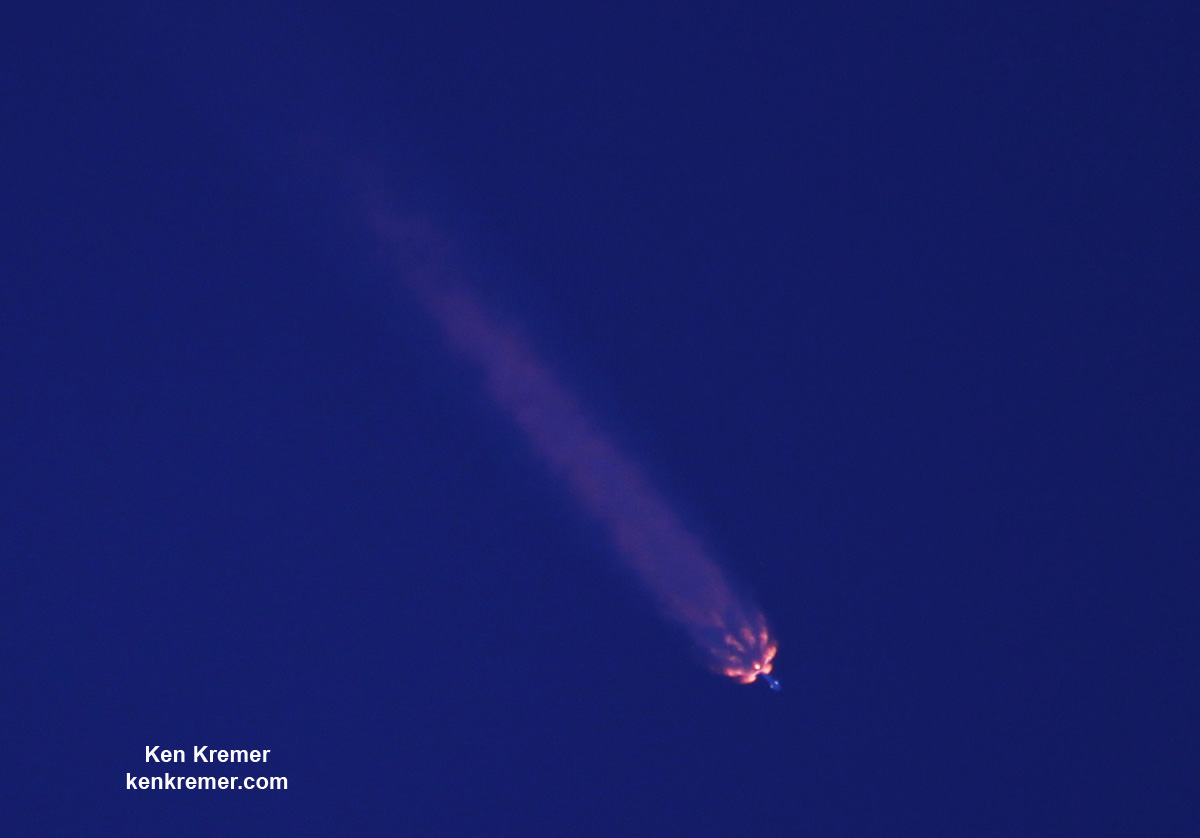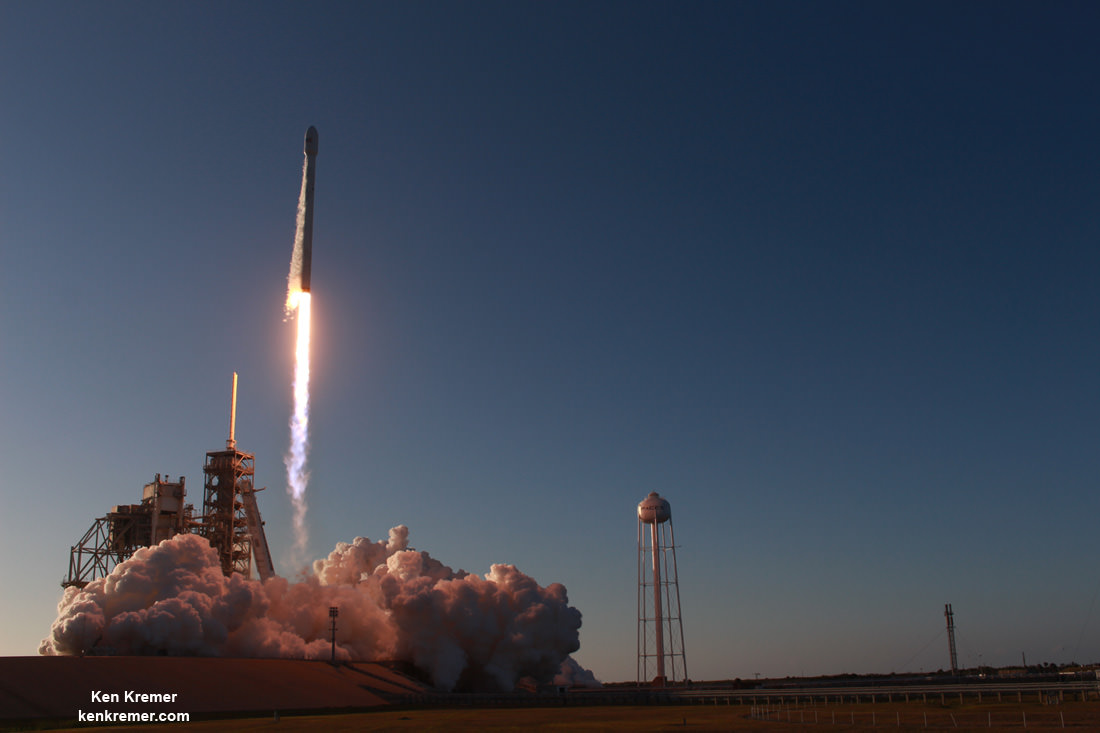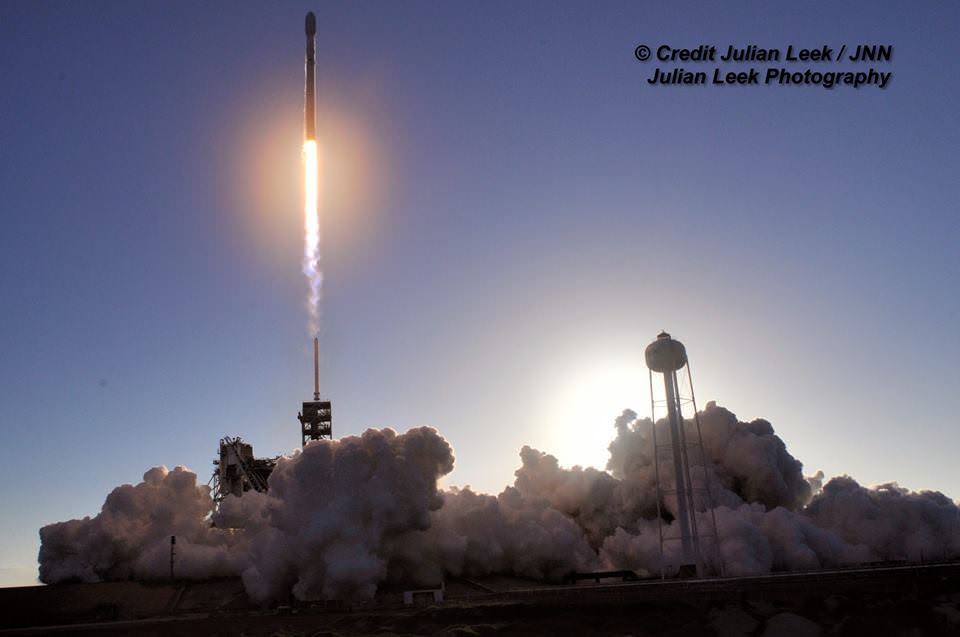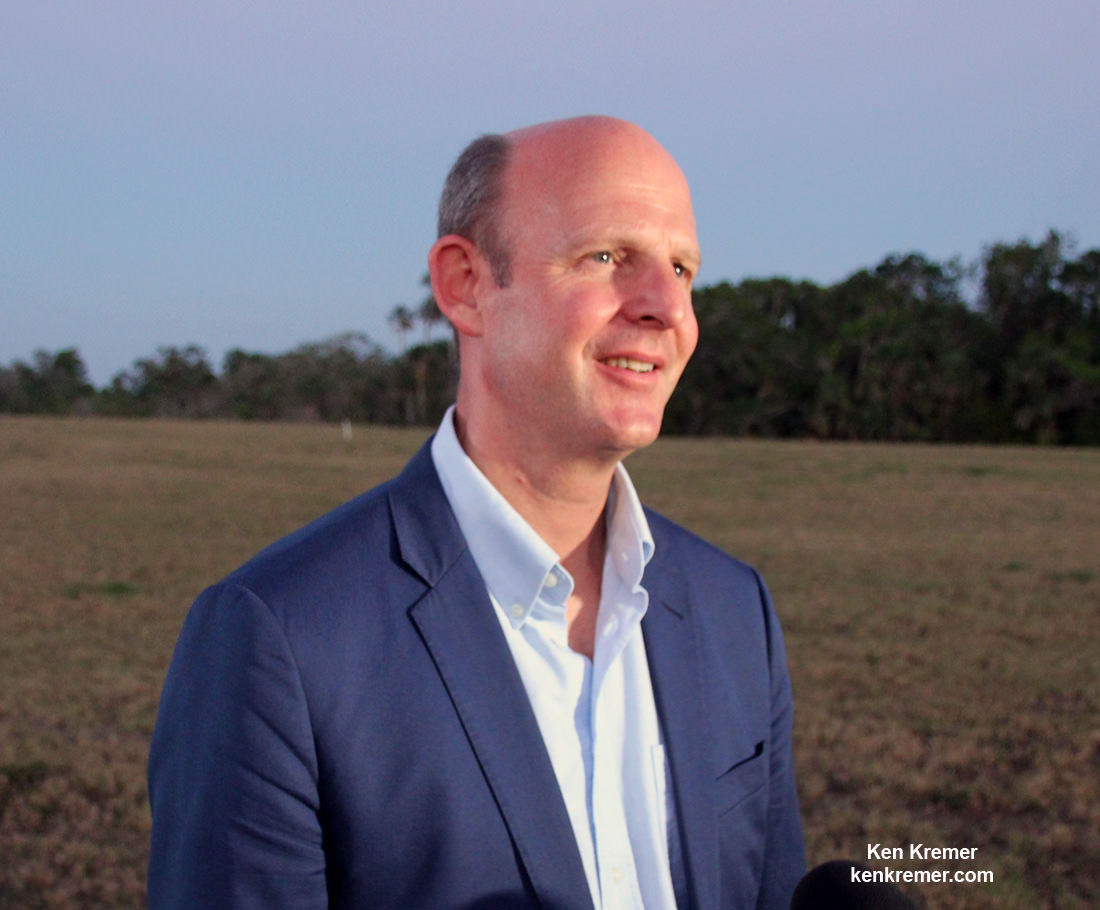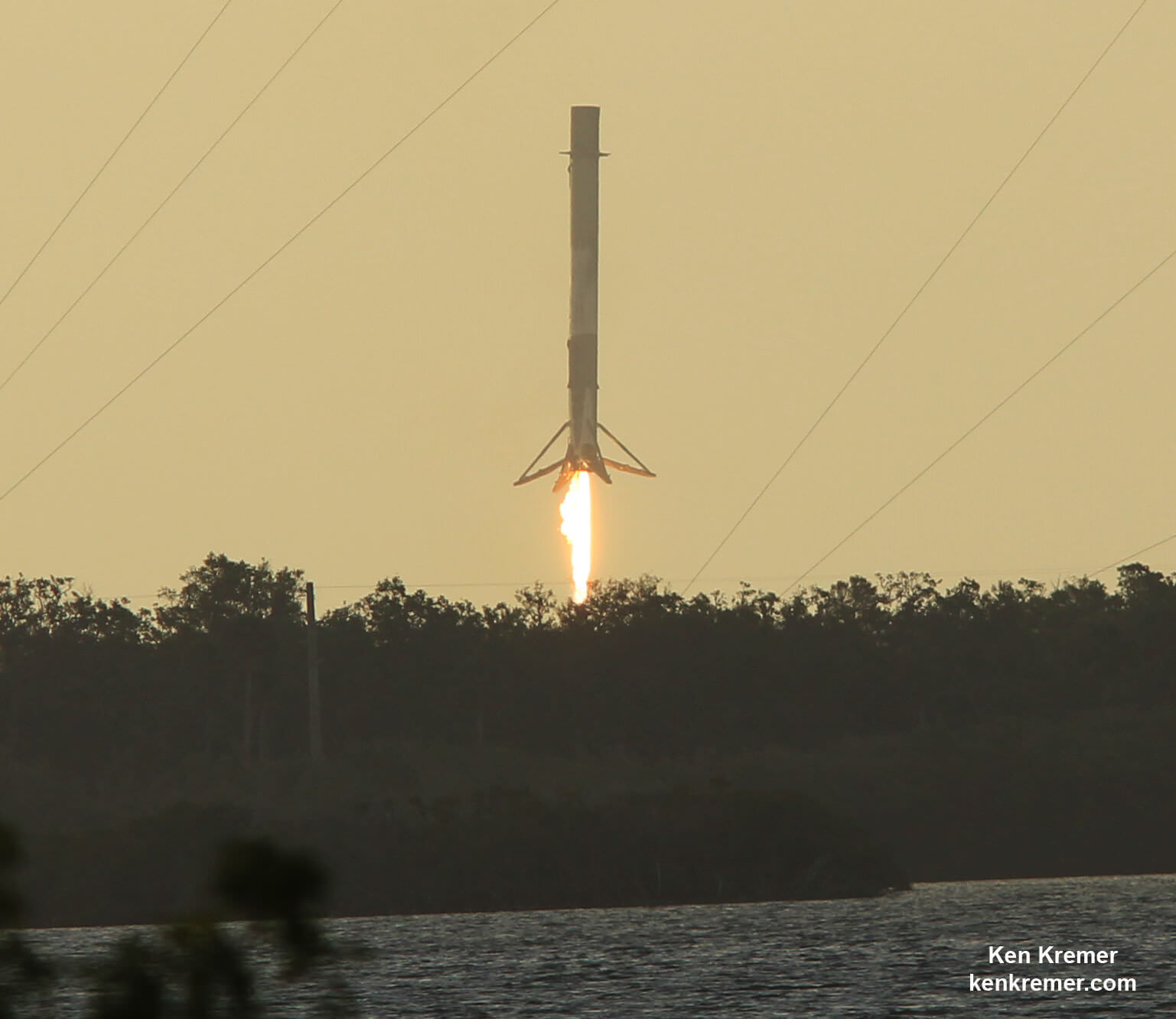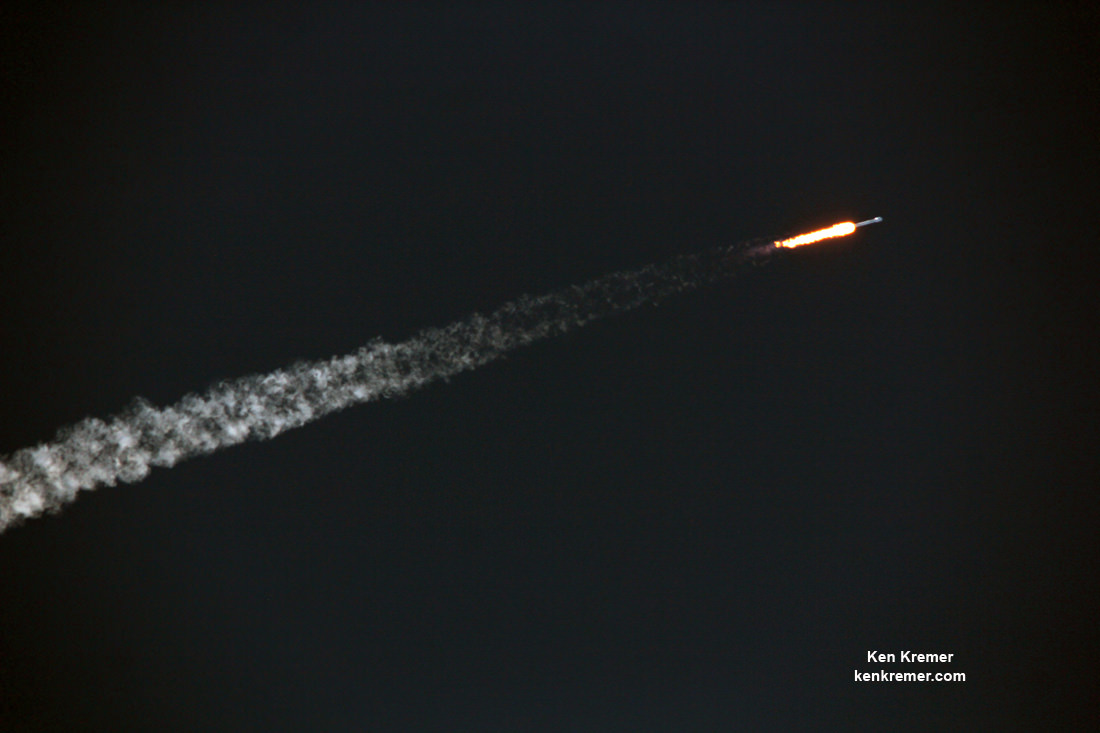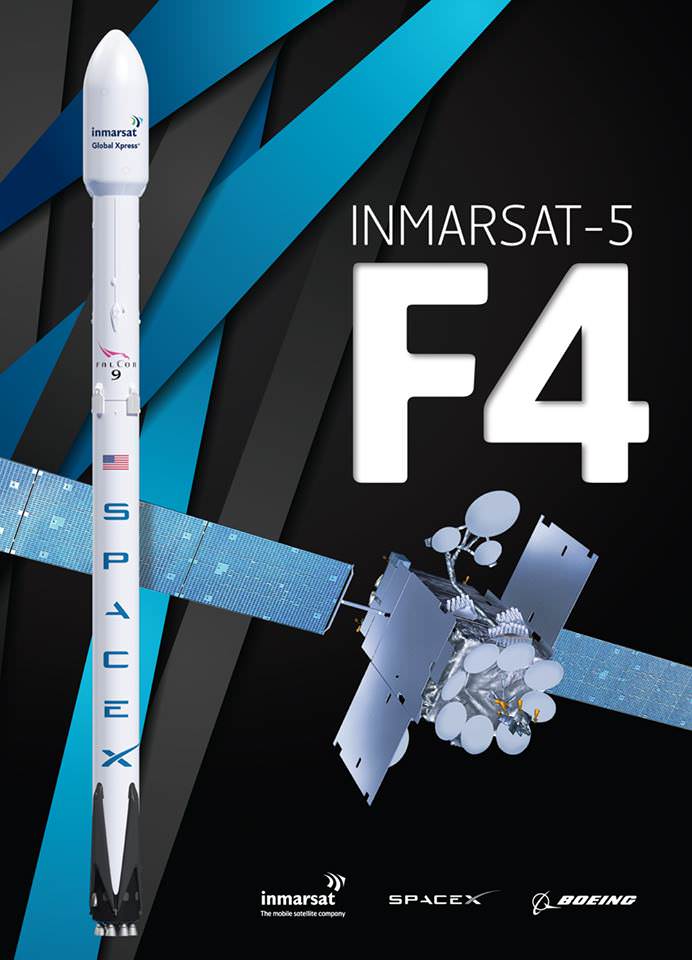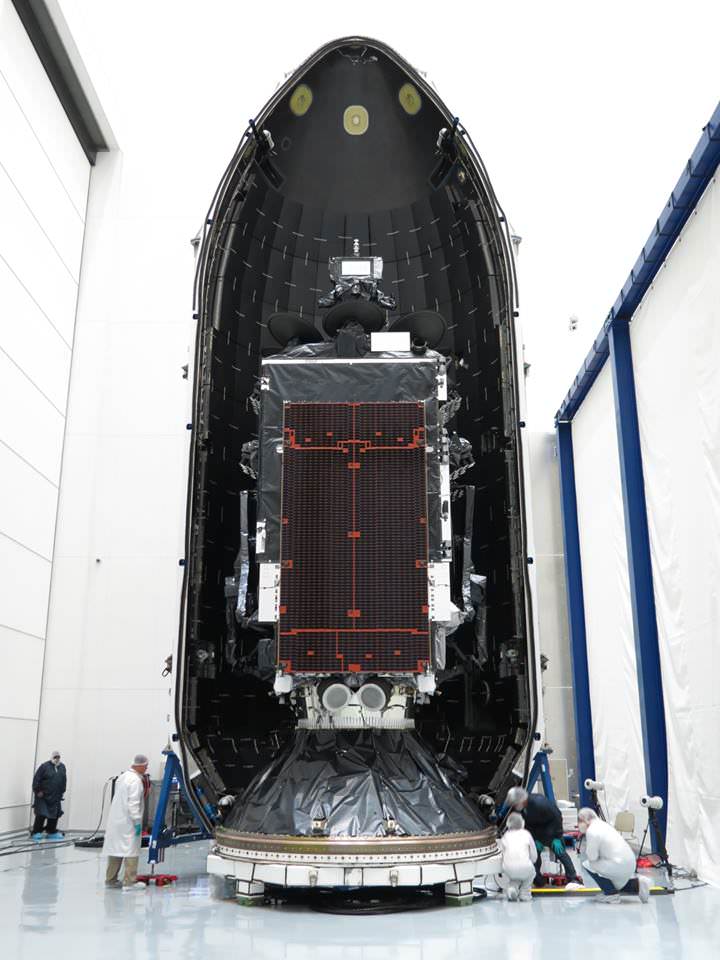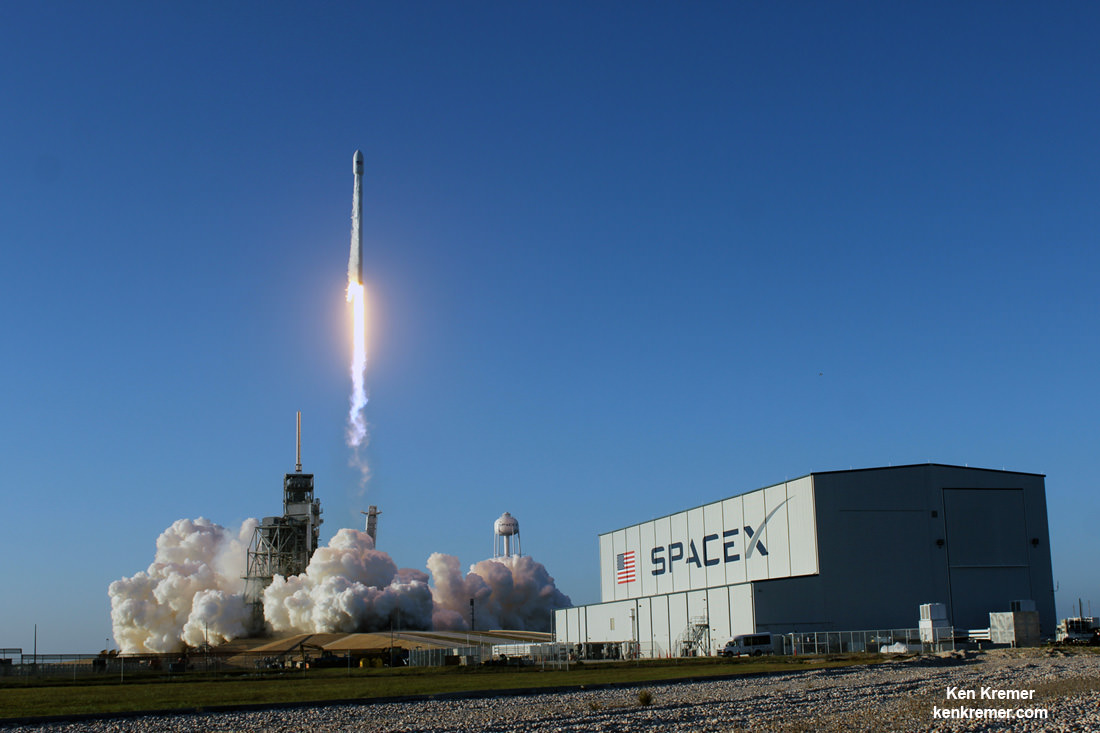
KENNEDY SPACE CENTER, FL – The third time proved to be the charm as SpaceX kept up a torrid 2017 launch pace and successfully ignited another Falcon 9 rocket late Wednesday, July 5, from the Florida Space Coast and delivered a powerful and heavy weight commercial TV satellite to orbit that will serve “tens of millions of customers globally,” Intelsat VP for Sales Kurt Riegel, told Universe Today at NASA’s Kennedy Space Center press site.
The SpaceX Falcon 9 put on a dazzling near dusk display as it roared off historic launch pad 39A on SpaceX’s tenth launch of 2017 Wednesday evening into brilliant blue skies with scarcely a cloud to be seen and delightfully summer weather conditions.
Blastoff of the Falcon 9 carrying the Intelsat 35e communications satellite for commercial high speed broadband provider Intelsat occurred right on time at dinnertime July 5 at 7:38 p.m. EDT, or 2338 UTC from SpaceX’s seaside Launch Complex 39A on NASA’s Kennedy Space Center in Florida.
The thunderous blastoff wowed hordes of spectators gathered along space coast beaches and causeways and local residential neighborhoods from came across the globe to witness and the launch spectacle and many of whom will be users of and benefit from the services offered by Intelsat 35e.
“Tens of millions of customers will be served and be touched by Intelsat 35e,” Intelsat VP for Sales & Marketing Kurt Riegel, told Universe Today in an exclusive interview beside the iconic countdown clock at NASA’s Kennedy Space Center Florida press site.
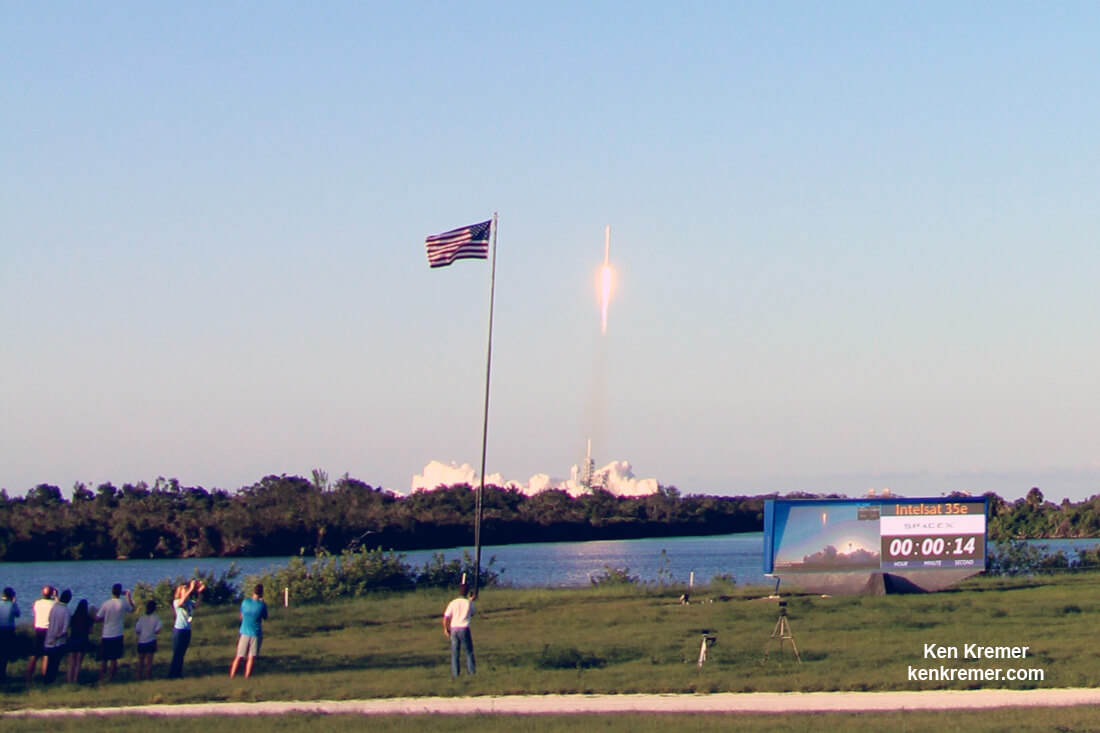
Wednesday’s liftoff finally took place safely after back to back last moment scrubs on Sunday and Monday (July 2/3) kept Falcon 9 from igniting its engine for the delayed journey to orbit.
Elon Musk told the SpaceX launch and engineering team to stand down over the 4th of July holiday and instead thoroughly investigate the root cause of the pait of launch aborts.
The near scrubs resulted from insidious anomaly not detected after the initial launch abort on Sunday, July 2.
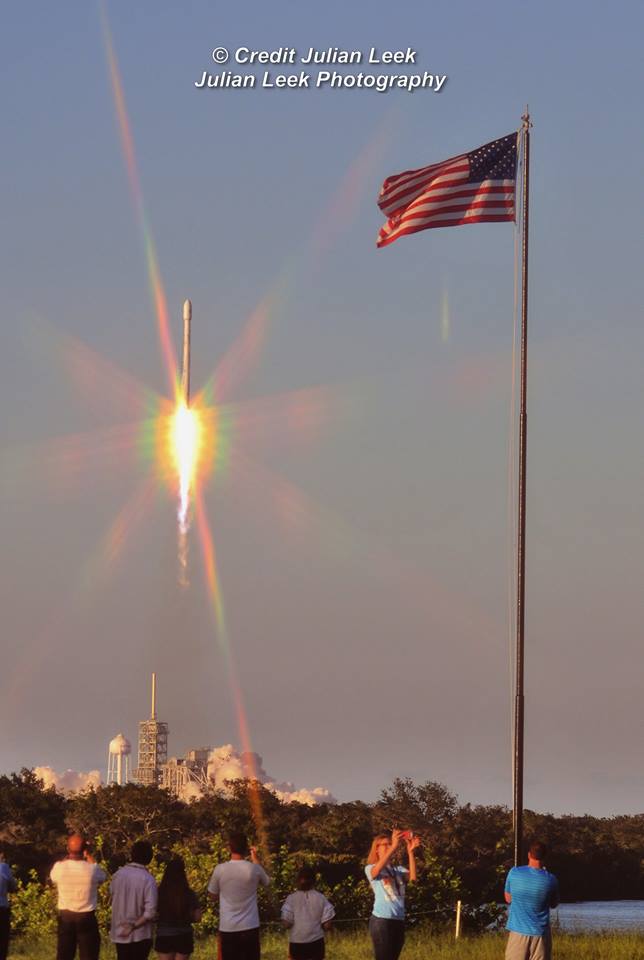
Intelsat 35e will be utilized by copious public, government and commercial clients throughout the Americas, Europe and Africa.
The 23 story tall Falcon 9 lofted Intelsat’s commercial Epic 35e next-generation high throughput satellite to geostationary transfer orbit.
It separated from the Falcon 9 upper stage as planned about a half hour after liftoff.
“The Intelsat 35e satellite separated from the rocket’s upper stage 32 minutes after launch, at 8:10 pm EDT, and signal acquisition has been confirmed,” Intelsat announced post launch..
“This was the SpaceX’s first satellite launch contracted by Intelsat,” Ken Lee, Intelsat’s senior vice president of space systems, told Universe Today in a prelaunch interview on Sunday.
“Intelsat 35e is the fourth in the series of our ‘Epic’ satellites. It will provide the most advanced digital services ever and a global footprint.”
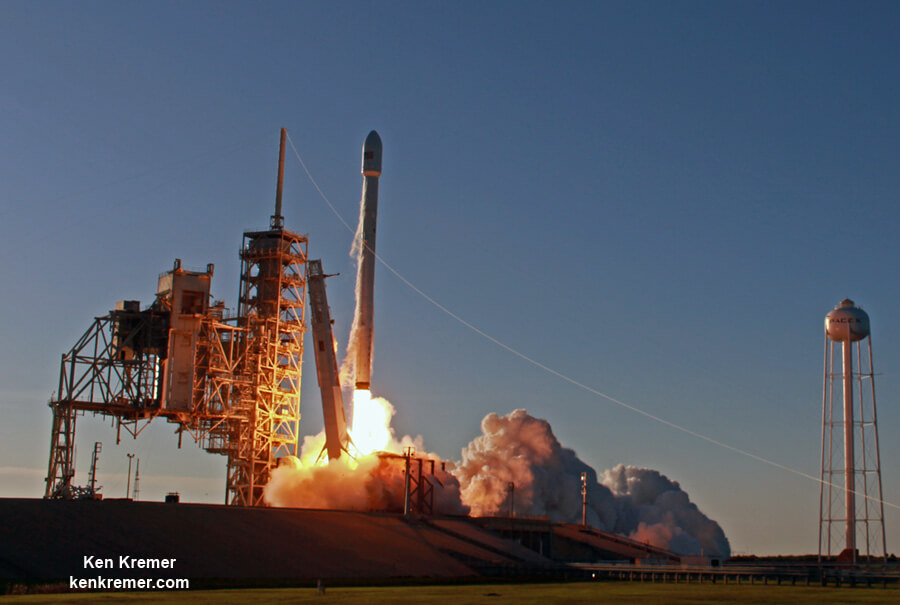
SpaceX has now safely and successfully demonstrated an amazing launch pace with 3 rockets propelled aloft in the span of just 12 days from both US coasts. Had Intelsat 35e been launched on Sunday, July 3, it would have established and even faster record pace of 3 launches in just 9 days.
“The successful launch of Intelsat 35e is a major milestone in our business plan for 2017, furthering the footprint and resilience of our Intelsat EpicNG infrastructure,” said Stephen Spengler, Chief Executive Officer, Intelsat, in a statement.
“With each Intelsat EpicNG launch, we advance our vision of creating a global, high performance for our customers that will unlock new growth opportunities in applications including mobility, wireless infrastructure and private data networks. As we further our innovations with respect to ground infrastructure and managed service offerings, like IntelsatOne Flex, we are transforming the role of satellite in the telecommunications landscape.”
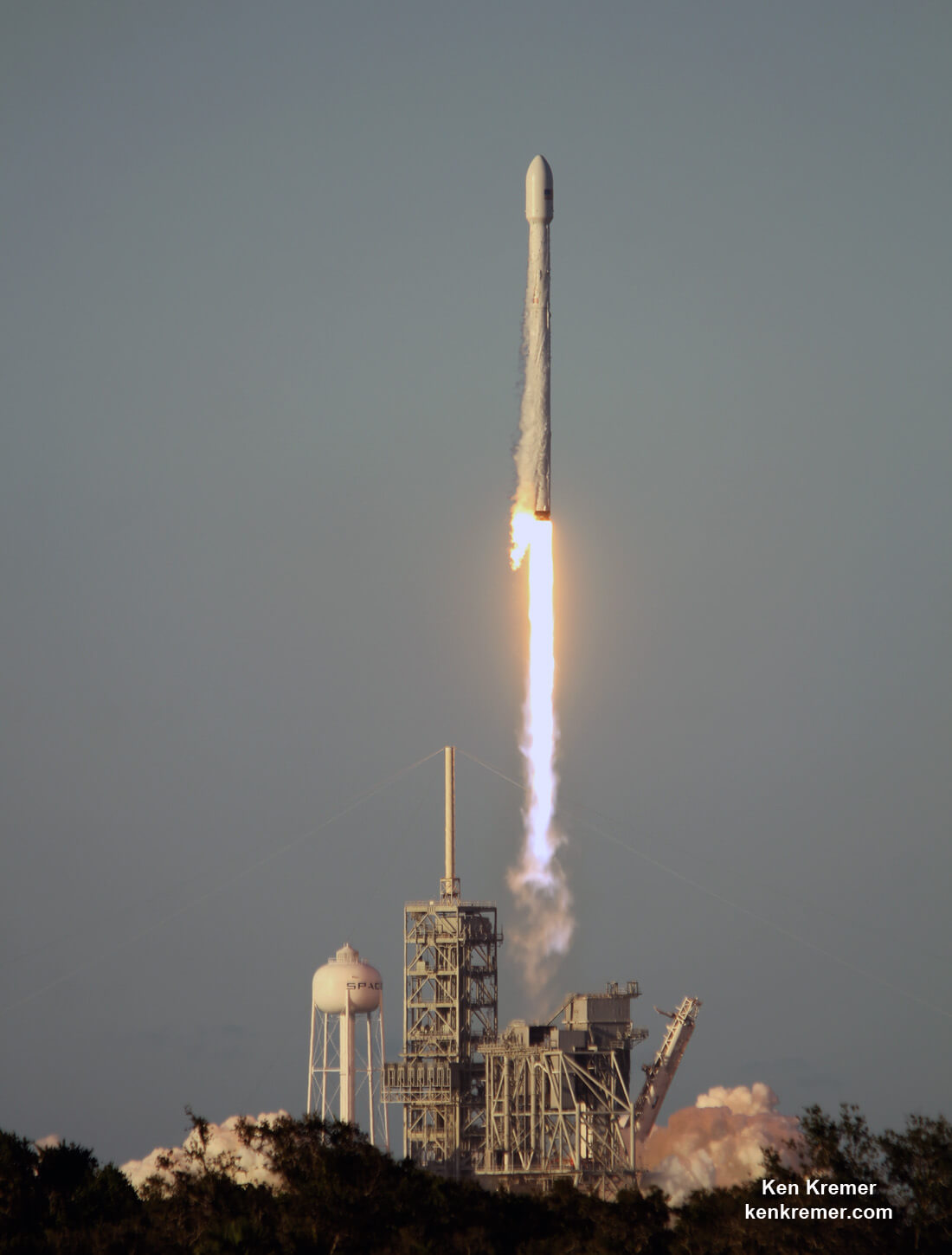
The geostationary comsat will provide high performance services in the C- And Ku-bands to customers in North and South America, the Caribbean, as well as the continents of Europe and Africa.
The Ku band service includes a customized high power beam for direct-to-home television (DTH) and data communications services in the Caribbean as well as mobility services in Europe and Africa
The first stage was not recovered for this launch because the massive 6800 kg (13000 lb) Intelsat 35e comsat requires every drop of fuel to get to the desired orbit.
Intelsat 35e marks the tenth SpaceX launch of 2017 – establishing a new single year launch record for SpaceX.
The recent BulgariaSat-1 and Iridium-2 missions counted as the eighth and ninth SpaceX launches of 2017.
Including those last two ocean platform landings, SpaceX has now successfully recovered 13 boosters; 5 by land and 8 by sea, over the past 18 months.
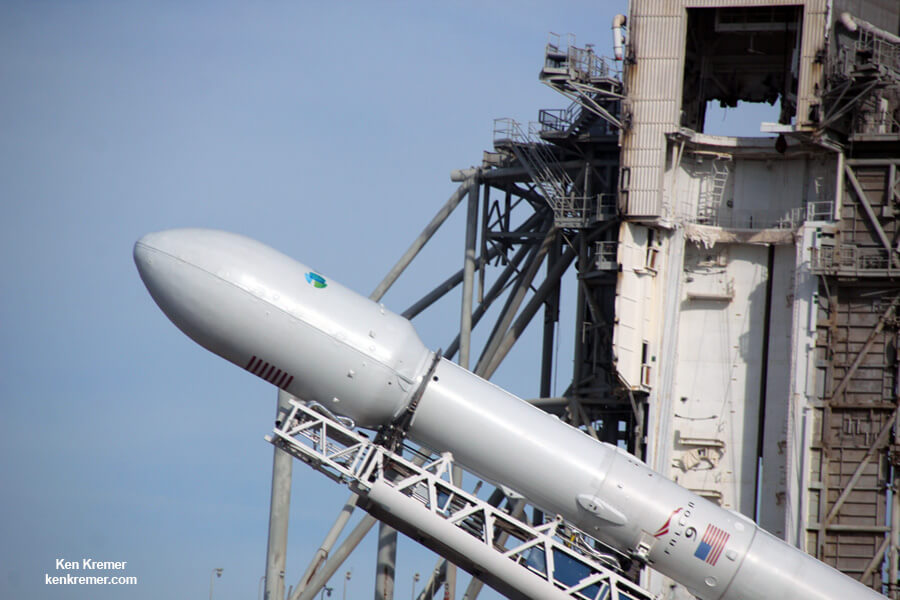
Watch for Ken’s onsite Intelsat 35e and space mission reports direct from the Kennedy Space Center and Cape Canaveral Air Force Station, Florida.
Stay tuned here for Ken’s continuing Earth and Planetary science and human spaceflight news.
